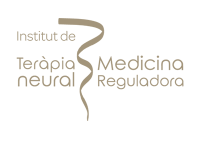Why Is Wellness Important
11 Minutes
Most individuals try their level best to make life changes that will boost their health and wellbeing. The concept of wellness encompasses much more than physical health, as it emphasizes how various aspects of your life can influence your happiness.
While we are all aware of the advantages of excellent physical health, wellness encompasses much more than that. The importance of well-being may be seen in many facets of our lives, including emotional, physical, environmental, spiritual, intellectual, occupational, financial, and social components.
All of these areas work together to produce a holistic wellness experience. You may minimize stress, lower your risk of sickness, and improve your overall well-being by maintaining high-quality and comprehensive wellness in all areas of your life.
Perhaps you’ve seen how this can operate in your own life. If you’re facing financial problems, for instance, it can affect many other aspects of your life, including your emotional, social, and environmental well-being.
It’s all about improving your standard of living. In a certain aspect, optimal well-being means you are enjoying your best possible life in that regard. Optimal wellness definition has varied in different resources. One of the common definitions of wellness goes to a state of total mental, physical, and social well-being, not only the lack of disease or disability.
When life spins out of control, for instance, if you have a high degree of emotional well-being, you may realize that you can stay calm. You are more likely to be happy and satisfied at work if you have better worksite wellness.
The greater each pillar of wellbeing is, the better your life becomes. The great news is that you won’t have to raise them all separately. Because they are all linked, improvement in one area of wellbeing frequently leads to betterment in others.
Because overall wellness necessitates action, you might only consider the steps necessary to improve your mental and physical health. Raising your physical activity, optimizing your diet, and finding strategies to keep your anxiety and stress levels low are all possible options. However, there is a substantial link between social ties and health.
According to research, our social bonds have an impact on our physical and mental health. They may even raise our risk of mortality in some circumstances.
Consider the last major quarrel you had with a family member or friend. Did it make you feel more stressed? What effect did it have on your mood? Did you want to do more or less exercise? Was it motivating you to stick to your diet or indulge in unhealthy or emotional eating instead? (Because mood influences what you eat, making good food choices may have been more difficult.
Consider a time when your bond with that individual was at its most fulfilling. What were your feelings at the time? Were you able to manage stress better? What effect did it have on your mood? What effect did it have on your workout or eating habits? It may be simpler to stick to a diet or fitness program when you have a lot of social support.
Social ties can also have an impact on health by encouraging the growth of more favorable habits. If a friend goes to the gymnasium every day, you might be more likely to follow suit. You might be less inclined to order that burger and fries if they order a salad for lunch.
The importance of individual wellness can be judged by the fact that it affects all aspects of our lives. It’s all about overcoming obstacles to achieve a balance that enables you to live your life to the fullest.
This is easier than it sounds, as many people struggle with at least one aspect of their lives. This is especially challenging when coping with external obstacles like health issues or unforeseen financial troubles. We may still do our best to improve each aspect of our lives as much as possible.
Here, we will dig deeper into each of the seven levels of wellness and see how they might be improved.
Physical Wellness – Nutrition, exercise, sleep, weight control, and other self-care routines that improve health and prevent disease throughout life.
Environmental Wellness – This includes an understanding of our relationship with our environment, as well as environmental maturity and stewardship. I also think of environmental wellbeing as having a safe and secure home where one feels safe and cared for.
Intellectual Wellness – Involves a passion for lifelong learning, which encourages participation in intellectually stimulating activities throughout one’s life and the application of collected knowledge and experience for the greater good.
Social Wellness – The ability to form and maintain meaningful relationships with others throughout one’s life. A spouse/partner, family, friends, coworkers, and acquaintances with common linkages such as community or religious interests are examples of these interactions.
Emotional Wellness – It is characterized by emotional balance rather than a permanent state of happiness. Emotional well-being refers to the ability to feel a wide range of emotions in response to life’s events, as well as the ability to express and cope with those emotions through internal processing and reaching out for help. This dimension also includes stress management and reduction, in my opinion.
Vocational Wellness – Understanding one’s strengths, skills, and level of knowledge and integrating them with the type of employment that is most meaningful and gratifying is what vocational wellness entails. Work is defined widely to include paid work, volunteer work, and other creative endeavors.
Spiritual Wellness – Reflecting on one’s beliefs and values, trying to come to terms with one’s existence, and organizing one’s experiences and decisions around these understandings are all part of spiritual wellness. Spiritual wellness can take many forms for different people, and it may or may not be articulated from a religious perspective.
It’s no secret that looking after your physical health is critical to your overall health and happiness. However, the ordinary American lives a busy, stressed-out existence that prioritizes health and fitness. There is a lot of confusing information out there regarding the newest health and fitness trends, but breaking it down into these five key areas of physical wellbeing will help you manage your health.
1. Sleep
Sleep is vital for physical well-being. Most people are aware that they require 8 hours of sleep per night to remain healthy and awake. Many people, particularly young ones, are unaware of the need of keeping a regular sleep pattern. While staying up until 3 a.m. and sleeping in until midday may provide enough sleep, your body will be unprepared to be sent to bed at 10 p.m. the next night and wake up at 6 for school or work. Your body, especially with regards to sleep, loves consistency. Many unpleasant symptoms might arise if your sleep cycle is regularly disrupted, including acute exhaustion, sluggishness, memory problems, emotional instability, and even an upsurge in diseases.
2. Healthy Eating
Eat Well for Physical Wellness. Contrary to popular belief, eating healthy does not imply being constantly hungry or living on greens for the rest of your life. Your body, like sleep, prefers consistency in terms of when and what you eat. Eating healthy foods like fruits, vegetables, whole grains, and lean meat regularly can provide you with nutrients that will not only sustain your body’s basic functions but will also help to balance your mental health. Eating too much when you’re not hungry or forcing yourself to miss meals might cause metabolic problems that can affect your physical and emotional health. Remember that eating well and drinking enough water go hand in hand.
3. Physical Exercise
Exercise is essential for physical well-being. Exercise, like eating healthy, conjures up a slew of negative images, ranging from personal trainers, and drill sergeants to hated gym classes in school. Physical activity does not have to be an unpleasant experience undergone just for the sake of health. While the long-term advantages of exercise are undeniable, many people find it difficult to incorporate it into their everyday routine. Finding an activity that you enjoy and can help you grow is the key to adhering to an exercise plan. If you find yoga or spin class to be too easy, don’t force yourself to participate. Hundreds of various workout sessions and approaches are available to keep you interested and motivated to progress.
4. Hygiene
Any action made to preserve health and avoid sickness is referred to as hygiene. Showering, hand washing, brushing teeth, and flossing are examples of everyday hygiene habits. Personal hygiene not only keeps you healthy, but it can also improve your mood, which is particularly beneficial for individuals suffering from depression.
Preventative medical treatment, like physical exams, visits to the dentist, and visits to an eye doctor when you have visual problems, are all examples of hygiene. Most people can shower regularly and brush their teeth, but many people put off medical checkups due to the inconvenience. In the long term, preventing illness or intervening with immediate treatment is far more advantageous than neglecting your health issues.
5. Unwinding and Relaxation
Relaxation is frequently thought of as purely a mental activity with only mental advantages. That is not the case. Muscle tension can produce headaches or back discomfort, and stress hormones can create several unpleasant side effects, including adrenal exhaustion. Everyone nowadays jams their calendars with activities and increases stress on themselves to go forward. While striving for brilliance is commendable, taking time to sit and unwind yourself is crucial to your general health. Everyone benefits from some “me time,” whether it’s getting a massage, relaxing at home with a nice book, or participating in a favorite sport.
Optimal wellness definition has varied in different resources. One of the common definitions of wellness goes to a state of total mental, physical, and social well-being, not only the lack of disease or disability.
As per the World Health Organization, a typical active individual is someone who engages in some form of physical activity at least 3 times per week in his spare time for at least 30 minutes.
Sporting activities have been scientifically shown to improve your health and well-being. The most common exercises are walking and gymnastics. However, any physical activity that tries to improve an individual’s health is welcomed. Activities that involve a higher level of physical exertion should only be started following a medical examination.
There are numerous health and fitness advantages of participating in sports. Weight loss and weight control are two of the most well-known and anticipated. Here are five more health advantages:
- Lowers the risk of heart disease, hypertension, diabetes, osteoporosis, and obesity.
- Muscle endurance is improved.
- It lowers cholesterol levels in the blood;
- Overcome insomnia;
- Tendons and ligaments become more flexible as a result.
But it’s not only about the physical outcomes. Exercises can also aid with stress relief and depression treatment. Serotonin, a hormone linked to happiness, is released when you practice regularly.
Physical activity is described as a series of activities that a person or a group of people engages in that involve calorie expenditure and changes in the body, such as workouts or exercises involving body motions, as well as social and mental activities, to improve health.
Sedentarism, or insufficient physical activity, is an issue that is becoming increasingly important. According to the World Health Organization (WHO), 70 percent of the world’s population is inactive or sedentary, putting them at risk for obesity, cardiovascular disease, and diabetes. The current way of life is responsible for 54 percent of the risk of dying from a stroke and 50 percent of the risk of dying from a heart attack, the two leading causes of mortality in the United States.
More than 60 percent of individuals living in metropolitan areas in the great developing world, of which Brazil is a member, do not engage in adequate physical activity. When we consider numbers from the 2000 census, which reveal that 80 percent of the population of Brazil lives in cities, the situation becomes evident.
Women, the elderly, individuals from lower socioeconomic backgrounds, and individuals with disabilities are the ones most affected by a sedentary lifestyle. From adolescence onwards, people’s levels of physical activity gradually decrease.
Obesity is on the rise all across the world, and it’s at least partly due to a lack of physical exercise. It is the amazing modern lifestyle, in which the majority of leisure time is spent, among other things, video games, watching TV, and using computers.
The numerous factors involved in physical wellness might seem daunting at first glance but the innumerable health benefits that it brings with itself are matchless. It is often said that if physical activity were available in the form of a pill, it would be the most precious anti-depressant.
Physical activity can help you control your weight, reduce your risk of diseases, build and strengthen your muscles and bones, and enhance your ability to complete everyday tasks.
Individuals who sit less and engage in moderate-to-vigorous physical activity boost their health. Physical wellbeing is one of the few lifestyle decisions that have such a significant impact on your health.
Immediate Advantages
Some of the effects of moderate-intensity physical activity on brain functioning and mental health occur immediately after a session. For youngsters aged 6 to 13, the benefits include enhanced thinking or cognition, and for grownups, reduced short-term anxiety levels. Physical activity helps you maintain your learning, thinking, and decision-making as you get older. It can also help relieve stress, sleep better and lessen your risk of anxiety and depression.
Weight Management
Weight control is influenced by both physical activity and eating habits routines.
Control your weight by increasing your moderate physical activity to 150 minutes per week, which include lawn work or dancing. With thirty minutes a day, five days a week, you might reach your target of 150 minutes each week.
To lose weight and keep it off, you’ll need to have a lot of physical activity unless you also change your eating habits and cut back on how many calories you consume. Consistent physical exercise and a proper diet are required to achieve and maintain a healthy weight.
Lower Your Health Risks
Cardiovascular Problems
In the United States, stroke and heart disease are the leading causes of death. Getting at least 150 minutes of moderate-intensity physical activity per week can reduce your risk of developing certain diseases.
Metabolic Syndrome and Type 2 Diabetes
Regular exercise can help you avoid developing metabolic syndrome and type 2 diabetes. Metabolic syndrome is characterized by excessive body fat around the waist, low HDL cholesterol, high blood pressure, high triglycerides, and/or high blood sugar.
Certain Cancers
Adults who engage in more physical activity have a lower risk of developing the following cancers:
- Breast
- Bladder
- Endometrium
- Esophagus (adenocarcinoma)
- Colon
- Lung
- Stomach (cardia and non-cardia adenocarcinoma)
Improve Your Daily Activities Capability and Avoid Falls
Grocery shopping, climbing stairs, and playing with your grandchildren are all common activities. A functional limitation is defined as the inability to do daily activities. Physically active older or middle-aged adults are less likely to have functional deficits than inactive people.
A range of physical activities enhances physical function and reduces the risk of falling or harm from a fall in older people. Include aerobic, muscle-strengthening, and balancing training in your daily routine. As part of an organized program, multicomponent daily activity can be done in community-based settings or at home.
Improve Your Odds of Living a Longer Life
A slight increase in moderate-to-vigorous physical exercise among US people aged 40 and older could avert approximately 110,000 deaths per year. Even an additional 10 minutes per day would make a significant difference.
Managing Chronic Illnesses and Disabilities
People with chronic diseases and impairments can benefit from regular physical activity. Regular physical activity, for instance, can:
- Reduce arthritis pain and enhance function, happiness, and life quality in adults.
- People with type 2 diabetes can use this to help regulate blood sugar levels and reduce their risk of cardiovascular disease and nerve damage.
HOW SENSES CAN HELP WITH Wellness
Senses is a leading provider of luxury addiction and mental health treatment for affluent individuals and their families, offering a blend of innovative science and holistic methods with unparalleled individualised care.
A UNIQUE METHOD
successful and proven integrative holistic conceptOur program consists of treating only one client at a time individually designed to help you with all the problematic aspects of your life. All individual treatment sessions will be held at your private residence.
more infoYour program is designed based on your personal needs. The team will exchange daily information and adjust the schedule as we go. Our therapists will work with you treating integrative not just the symptoms and goes beyong your stay to ensure lasting success.
more infoOur biochemical imbalance can be affected by diet and stressful life events, but it often goes back to genetics and epigenetics. We do specific biochemical laboratory testing to determine an individual’s biochemical imbalance. Combining the results of the lab tests with anamnestic information and clinical tests, we prescribe an individualized and compounded vitamin, mineral, nutrient protocol to help recover from various disease states.
more infoOur experts combine the best from psychological treatment, holistic medicine to support you individually and providing complementary therapies all coordinated from one source working complementing each other integrative.
more infoUsing latest cutting-edge technology-based therapies such as Neurofeedback, tDCS, and SSP, we can track the biological patterns of your body, giving us valuable insight into your health and well-being as well support your brain and body performance and recovery with neuromodulation.
more infoOur chef and nutrition specialist will design your personalized diet plan supporting your body & mind recovery as well as helping with weight management. Nutrition workshops and mindful eating sessions will help you to maintain a healthy lifestyle.
more infoWellness TREATMENT LASTING APPROACH
0 Before
Send Request
0 Before
Define Treatment Goals
1 week
Assessments
1-4 week
Integrative Holistic Therapies
5-12 week
Aftercare
12+ week
Refresher Visit
Wellness Insights
latest news & research on Wellness
Stress Management
Stress management isn't a magic wand that makes stress vanish. Instead, it's a toolkit full of strategies and techniques that help you handle stress better
read more
Leadership Burnout
Leadership burnout, often termed executive burnout or executive stress syndrome, encapsulates the exhaustive toll that high-stakes leadership roles take on individuals
read moreAccreditations





























































